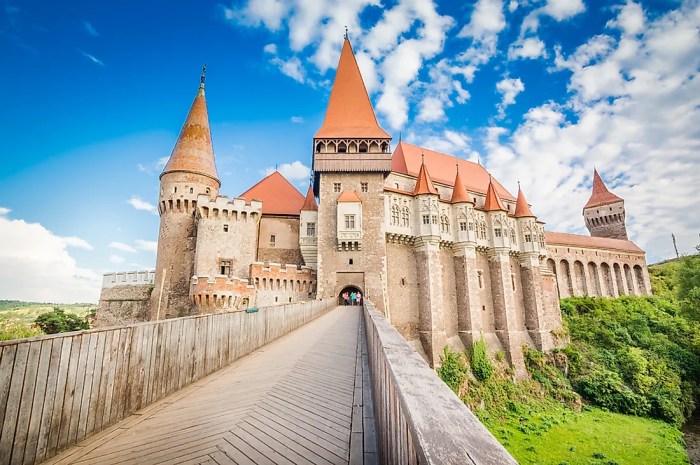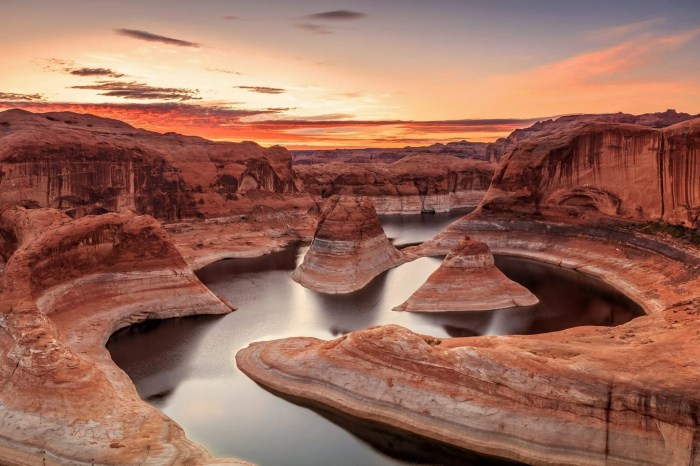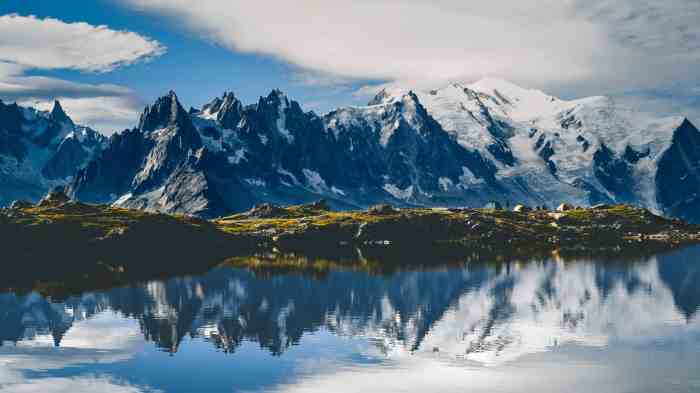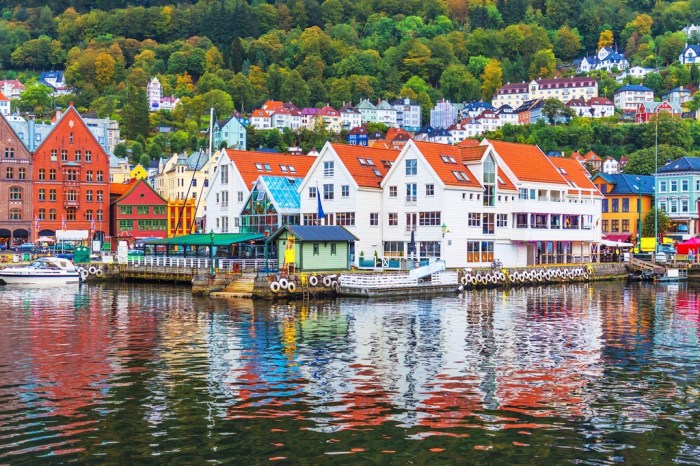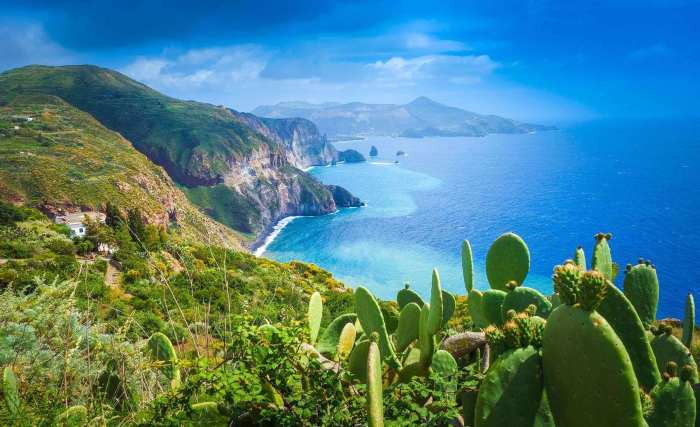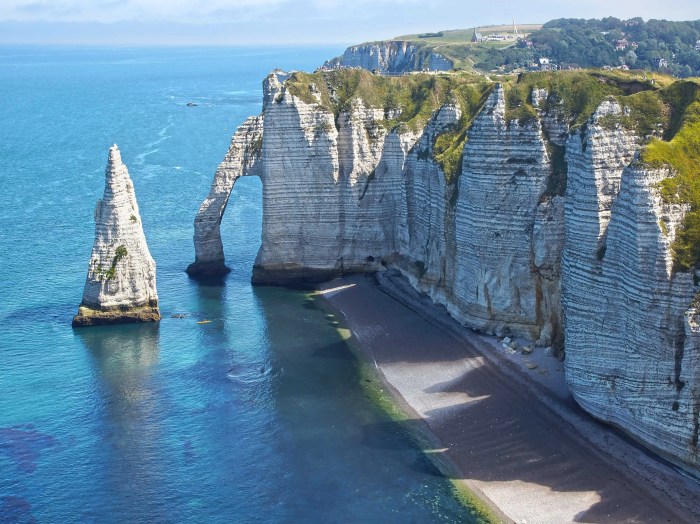Top 10 Places To Visit In Italy
Top 10 Places To Visit In Italy: From the ancient ruins of Rome to the picturesque canals of Venice, Italy offers a captivating blend of history, culture, and natural beauty. Whether you’re an art enthusiast, a history buff, or simply looking for a relaxing getaway, Italy has something for everyone.
This diverse country is a melting pot of influences, with each region boasting its own unique charm. From the rolling hills of Tuscany to the rugged coastline of Sardinia, Italy’s landscapes are as varied as its people. Whether you’re strolling through the cobblestone streets of Florence, savoring a delicious meal in Naples, or soaking up the sun on the Amalfi Coast, you’re sure to be captivated by the beauty and allure of Italy.
Italy: A Journey Through Time and Beauty
Italy, a country steeped in history, art, and culture, is a captivating destination that draws travelers from all corners of the globe. Its diverse landscapes, ranging from snow-capped Alps to sun-drenched beaches, offer a myriad of experiences for every taste.
From ancient ruins and Renaissance masterpieces to charming villages and vibrant cities, Italy is a treasure trove of attractions waiting to be discovered. Its rich culinary heritage, renowned wines, and passionate people add to the allure, making it a truly unforgettable travel experience.
Italy’s Diverse Attractions
Italy’s appeal lies in its diverse range of attractions, each offering a unique glimpse into the country’s rich history and culture. From ancient ruins and Renaissance masterpieces to charming villages and vibrant cities, Italy is a treasure trove of experiences waiting to be discovered.
- Ancient History and Roman Heritage: Italy is home to some of the world’s most impressive ancient ruins, including the Colosseum in Rome, the ruins of Pompeii, and the ancient city of Herculaneum. These sites offer a fascinating glimpse into the Roman Empire’s grandeur and power.
- Renaissance Art and Architecture: The Renaissance period left an indelible mark on Italy, with stunning masterpieces found in cities like Florence, Rome, and Venice. The Uffizi Gallery in Florence, the Vatican Museums in Rome, and St. Mark’s Basilica in Venice are just a few examples of the architectural and artistic marvels that define this era.
- Picturesque Villages and Towns: Italy is dotted with charming villages and towns, each with its own unique character and history. From the hilltop villages of Tuscany to the coastal towns of Amalfi, these destinations offer a glimpse into traditional Italian life.
- Vibrant Cities: Italy’s major cities, such as Rome, Milan, Florence, and Venice, are vibrant hubs of culture, fashion, and cuisine. Each city offers a unique blend of history, art, and modern life.
- Stunning Natural Beauty: From the snow-capped Alps to the sun-drenched beaches of the Mediterranean, Italy’s natural beauty is breathtaking. The Cinque Terre, a series of five colorful villages perched on cliffs along the Italian Riviera, is a popular destination for its picturesque scenery and hiking trails.
The Amalfi Coast, known for its dramatic cliffs and charming coastal towns, is another natural wonder.
Rome: The Eternal City

Rome, the capital of Italy, is a city steeped in history and culture, boasting iconic landmarks, world-class museums, and a vibrant culinary scene. It’s a city that has witnessed the rise and fall of empires, the birth of Christianity, and the flourishing of Renaissance art.
Historical Significance
Rome’s history dates back over 2,700 years, and its significance lies in its role as the capital of the Roman Empire, one of the most influential civilizations in human history. The Roman Empire’s vast territory stretched across Europe, North Africa, and the Middle East, leaving an enduring legacy in law, language, architecture, and engineering.
The city’s strategic location on the Tiber River made it a natural center for trade and power.
Iconic Landmarks
Rome is home to some of the world’s most iconic landmarks, each telling a story of the city’s rich past.
- The Colosseum: This massive amphitheater, built in 80 AD, was once the site of gladiatorial contests, public executions, and other spectacles. Today, it stands as a testament to the Romans’ architectural prowess and their love for entertainment.
- The Roman Forum: This sprawling complex of ruins was once the heart of ancient Rome, where political life, commerce, and religious ceremonies took place. Visitors can wander through the ruins of temples, basilicas, and senate buildings, imagining the bustling activity of the past.
- The Pantheon: This remarkable temple, built in 126 AD, is known for its awe-inspiring dome, which is the largest unreinforced concrete dome in the world. It’s a masterpiece of Roman engineering and a testament to the ingenuity of ancient architects.
Vatican City
Nestled within the city of Rome lies Vatican City, the world’s smallest country and the center of the Catholic Church. The Vatican is home to St. Peter’s Basilica, one of the largest churches in the world, and the Vatican Museums, which house an impressive collection of art and artifacts.
The Pope, the head of the Catholic Church, resides in Vatican City.
Food and Culture
Rome is a city that tantalizes the senses, with its vibrant food scene and cultural attractions.
- Food: Rome is renowned for its pasta dishes, like carbonara and cacio e pepe, and its pizzas. Visitors can enjoy traditional Roman cuisine in trattorias and restaurants throughout the city.
- Culture: Rome is a city that thrives on art and culture. Visitors can explore the city’s many museums, including the Capitoline Museums, the Borghese Gallery, and the Galleria Borghese. The city is also home to world-renowned opera houses and theaters.
Italy is a dream destination for many, with its iconic landmarks like the Colosseum and the Leaning Tower of Pisa. But if you’re looking for a different kind of adventure, you might want to check out the Top 25 Places To Visit in Norway.
Norway is known for its stunning fjords, dramatic mountains, and charming villages. After experiencing the beauty of Norway, you can return to Italy and explore its hidden gems, like the charming Amalfi Coast or the vibrant city of Naples.
Florence
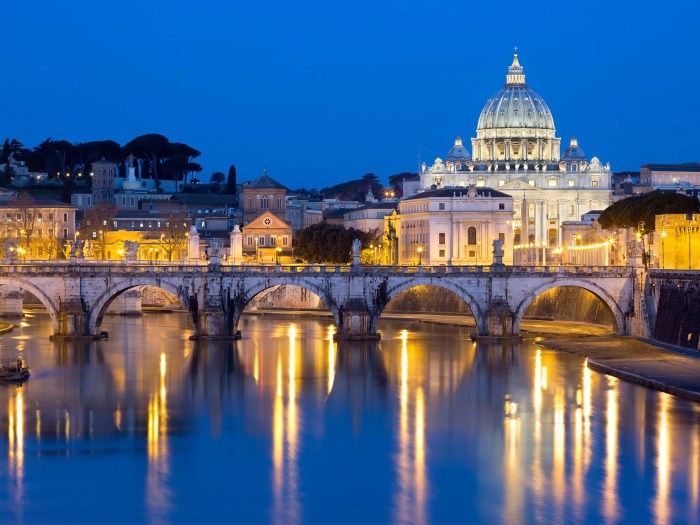
Florence, a city nestled in the heart of Tuscany, is renowned as the birthplace of the Renaissance, a period of remarkable artistic, cultural, and intellectual flourishing that transformed Europe. It was in Florence that the spirit of humanism, a renewed interest in classical art, literature, and philosophy, blossomed, paving the way for a golden age of creativity.
The Renaissance Movement in Florence
The Renaissance movement in Florence was fueled by a confluence of factors, including the city’s wealth, its patronage of the arts, and its intellectual climate. Florence was a center of trade and commerce, with a thriving merchant class that could afford to commission works of art and support artists.
The Medici family, a powerful banking dynasty, played a pivotal role in fostering the arts, becoming renowned patrons who commissioned masterpieces from some of the greatest artists of the era.
Masterpieces of Renaissance Art
Florence is home to an extraordinary collection of Renaissance masterpieces, each a testament to the genius of the period’s artists. Among the most celebrated works are Michelangelo’s David, a monumental marble sculpture that embodies the ideal of Renaissance humanism, and Botticelli’s Birth of Venus, a captivating painting that captures the spirit of the era’s rediscovery of classical mythology.
Iconic Landmarks
Florence boasts a wealth of iconic landmarks that embody the city’s rich history and artistic heritage. The Ponte Vecchio, a medieval bridge lined with shops, is a unique and charming feature of the city, while the Uffizi Gallery houses an impressive collection of Renaissance paintings, including works by Leonardo da Vinci, Michelangelo, and Raphael.
The Duomo, Florence’s magnificent cathedral, is a breathtaking example of Florentine Gothic architecture, with its iconic dome designed by Filippo Brunelleschi.
The Medici Family and Their Legacy
The Medici family, a dynasty of wealthy bankers and merchants, played a crucial role in shaping the Renaissance in Florence. They were ardent patrons of the arts, commissioning works from some of the greatest artists of the era, including Leonardo da Vinci, Michelangelo, and Raphael.
Their patronage not only enriched the city with masterpieces but also helped to create an environment that nurtured creativity and innovation. The Medici family’s legacy is evident in the countless works of art, architecture, and cultural institutions that grace Florence today.
Venice
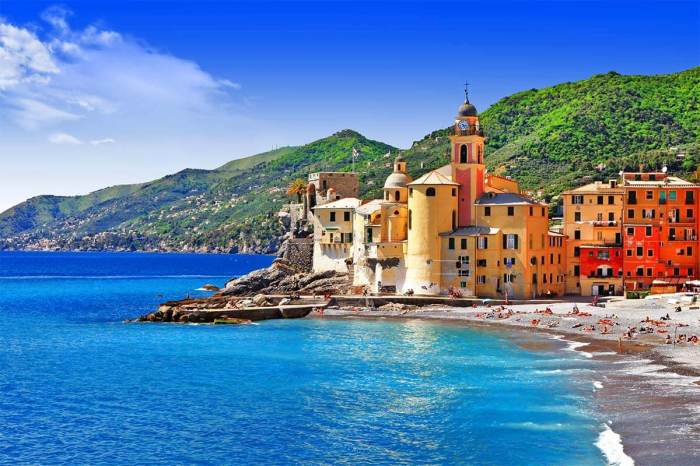
Venice, a city built on a lagoon in northeastern Italy, is a truly unique destination. It’s a place where history and romance intertwine, creating an unforgettable experience. The city’s unique architecture, transportation system, and iconic sights make it a must-visit for any traveler.
The Architecture of Venice
Venice’s architecture is a blend of Byzantine, Gothic, and Renaissance styles, reflecting its rich history. The city’s buildings are constructed on wooden piles driven into the lagoon’s muddy bottom, providing a stable foundation for the structures. The most notable feature of Venetian architecture is its use of marble, which gives the buildings a distinctive elegance.
Venice’s Transportation System
Venice is a city without cars or roads. Instead, it relies on a network of canals and bridges. The main mode of transportation is the vaporetto, a water bus that travels along the canals. Gondolas, the iconic Venetian boats, are also used for transportation, but primarily for tourism.
Iconic Sights of Venice
Venice is home to many iconic sights, including:
- St. Mark’s Square, the heart of Venice, is a bustling plaza surrounded by stunning buildings, including St. Mark’s Basilica and Doge’s Palace.
- Doge’s Palace, a magnificent Gothic palace that served as the seat of the Venetian government for centuries. Visitors can explore its opulent interiors and learn about the city’s history.
- The Rialto Bridge, a stunning arched bridge that spans the Grand Canal. It’s a popular spot for shopping and people-watching.
Gondola Rides and Romantic Atmosphere
Gondola rides are an essential part of the Venetian experience. These traditional wooden boats, propelled by a single gondolier, glide through the canals, offering a unique perspective of the city. The romantic atmosphere of Venice is enhanced by the gentle sound of the gondolas’ oars and the quiet murmur of the canals.
History of Venice as a Maritime Power
Venice was a major maritime power during the Middle Ages and Renaissance. Its strategic location on the Adriatic Sea allowed it to control trade routes between the East and West. Venice’s powerful navy and its skilled merchants made it a wealthy and influential city-state.
The city’s decline began in the 16th century, as its trade routes were challenged by other European powers.
Cinque Terre: The Five Lands
Imagine a rugged coastline carved by the Mediterranean Sea, where vibrant villages cling to steep cliffs, and colorful houses cascade down hillsides. This is Cinque Terre, a breathtaking stretch of the Italian Riviera that captivates visitors with its stunning natural beauty and charming cultural heritage.
The Five Villages
The Cinque Terre, meaning “Five Lands,” comprises five picturesque villages: Monterosso al Mare, Vernazza, Corniglia, Manarola, and Riomaggiore. Each village boasts its unique charm and character, offering a diverse range of experiences for travelers.
- Monterosso al Mare, the largest of the five villages, is known for its long, sandy beach, vibrant nightlife, and lively atmosphere. Its colorful houses and charming piazzas provide a quintessential Italian experience.
- Vernazza, with its picturesque harbor and pastel-colored buildings, is a popular destination for boat trips and leisurely strolls. Its historic church and the imposing Castello Doria, perched on a hill overlooking the village, add to its allure.
- Corniglia, perched high on a cliff, offers panoramic views of the coastline and the surrounding villages. This village is unique for its lack of a direct connection to the sea, making it a peaceful and secluded retreat.
- Manarola, a picturesque fishing village, is renowned for its colorful houses that cascade down the hillside towards the sea. Its stunning harbor and the iconic “Via dell’Amore” (Path of Love), a romantic walkway carved into the cliffs, make it a popular destination for couples.
- Riomaggiore, the most southern of the five villages, is known for its vibrant red-colored houses and its bustling harbor. Its narrow, winding streets and traditional shops offer a glimpse into the village’s rich history and culture.
Hiking Trails and Stunning Views, Top 10 Places To Visit In Italy
Cinque Terre is a hiker’s paradise, with a network of well-maintained trails connecting the five villages. The “Sentiero Azzurro” (Blue Trail) is the most popular route, offering breathtaking views of the coastline, the villages, and the Mediterranean Sea.
- The “Sentiero Azzurro”, a scenic coastal path, offers panoramic views of the turquoise waters and the dramatic cliffs. It is a challenging but rewarding hike, allowing travelers to immerse themselves in the natural beauty of Cinque Terre.
- The “Via dell’Amore”, a romantic walkway connecting Manarola and Riomaggiore, offers stunning views of the coastline and the sea. This path is ideal for couples seeking a peaceful and scenic stroll.
- The “Sentiero dei Guariti”, a high-altitude trail connecting Corniglia and Manarola, offers panoramic views of the five villages and the surrounding countryside. It is a challenging hike but provides a unique perspective of the Cinque Terre region.
Fishing Culture and Local Cuisine
Cinque Terre’s history is deeply intertwined with its fishing culture. The region’s traditional cuisine reflects the abundance of fresh seafood available in the Mediterranean Sea.
- Fresh Seafood: Cinque Terre’s restaurants and trattorias offer a wide variety of fresh seafood dishes, including grilled fish, seafood pasta, and traditional fish stews.
- Local Wines: The region is known for its excellent wines, particularly the DOC (Denominazione di Origine Controllata) wines of Cinque Terre. These wines are produced from local grape varieties and are often enjoyed with seafood dishes.
- “Focaccia al Pesto”: This traditional flatbread, topped with a vibrant pesto sauce made with basil, pine nuts, garlic, and olive oil, is a local delicacy.
- “Trofie al Pesto”: These small, hand-rolled pasta are a staple of the Cinque Terre cuisine. They are typically served with a generous amount of pesto sauce and are a true taste of the region.
Amalfi Coast
The Amalfi Coast, a UNESCO World Heritage Site, is a breathtaking stretch of coastline in southern Italy that captivates visitors with its dramatic beauty. This picturesque region, nestled along the Sorrentine Peninsula, offers a symphony of vibrant colors, charming towns, and stunning landscapes that have made it one of the most popular destinations in the world.
The Towns of the Amalfi Coast
The Amalfi Coast is renowned for its charming towns, each with its own unique character and allure.
- Positano, perched on a steep cliffside, is a colorful town known for its cascading houses, narrow cobblestone streets, and stunning views of the Mediterranean Sea.
- Amalfi, the namesake of the coast, is a historic town with a rich maritime past. Its charming cathedral, vibrant shops, and picturesque harbor make it a popular destination for travelers.
- Ravello, situated high on a clifftop, offers panoramic views of the coast and the surrounding countryside. This tranquil town is known for its gardens, villas, and the iconic Villa Rufolo, a masterpiece of architecture and art.
The Natural Beauty of the Amalfi Coast
The Amalfi Coast is a tapestry of natural wonders, from dramatic cliffs to pristine beaches.
- The coastline is defined by dramatic cliffs that plunge into the turquoise waters of the Mediterranean Sea, creating breathtaking views that have inspired artists and poets for centuries.
- The colorful houses, painted in vibrant hues of yellow, orange, and pink, cascade down the hillsides, adding a splash of color to the landscape.
- The Amalfi Coast is also home to a number of pristine beaches, including the iconic Spiaggia Grande in Positano and the secluded beaches of Marina Grande in Amalfi. These beaches offer a perfect escape from the hustle and bustle of city life.
The History of the Amalfi Coast
The Amalfi Coast has a rich history dating back to ancient times. The region played a significant role in maritime trade during the Middle Ages, with Amalfi emerging as a powerful maritime republic. The town’s influence extended throughout the Mediterranean, and its seafaring skills and trade routes contributed to its wealth and prosperity.
Tuscany
Tuscany, nestled in the heart of Italy, is a region that captivates the senses with its rolling hills, picturesque vineyards, and charming medieval towns. It’s a place where history and culture intertwine, creating a tapestry of beauty and enchantment. From the iconic leaning tower of Pisa to the vibrant city of Florence, Tuscany offers a journey through time and beauty that will leave a lasting impression.
The Tuscan Landscape
Tuscany’s landscape is a symphony of rolling hills, vineyards, and olive groves. The region’s distinctive beauty stems from its unique geography, a combination of fertile valleys and rugged mountains. The rolling hills, known as “colline,” are covered in vineyards, olive groves, and cypress trees, creating a picturesque scene that has inspired countless artists and writers.
Medieval Towns
Tuscany is home to several enchanting medieval towns, each with its unique charm and history.
- Siena, with its magnificent Piazza del Campo, is a testament to the region’s rich history. The square, the heart of the city, hosts the famous Palio, a thrilling horse race held twice a year.
- San Gimignano, known as the “City of Towers,” boasts a skyline dominated by its medieval towers, a reminder of its prosperous past. The town is also renowned for its production of Vernaccia, a distinctive white wine.
- Pisa, famous for its leaning tower, is a city steeped in history and art. The tower, along with the Duomo, Baptistery, and Camposanto Monumentale, forms a UNESCO World Heritage Site.
Tuscany’s Renowned Wines, Food, and Art
Tuscany is synonymous with fine wines, delectable cuisine, and exquisite art.
Italy’s got it all, from ancient ruins to stunning beaches, but sometimes you crave something different. If you’re feeling the need for some Alpine scenery and Swiss chocolate, check out the Top 25 Places To Visit in Switzerland – you won’t be disappointed! After all, a trip to Italy is always better when you have a good Swiss adventure to compare it to, right?
- The region is home to some of Italy’s most renowned wines, including Chianti, Brunello di Montalcino, and Vino Nobile di Montepulciano. Each wine boasts a unique flavor profile, reflecting the terroir and the winemaking traditions of the region.
- Tuscany’s cuisine is a celebration of fresh, local ingredients. Dishes like Florentine steak, pasta with truffle sauce, and ribollita, a hearty bread soup, are staples of Tuscan gastronomy.
- Tuscany has been a cradle of artistic brilliance, particularly during the Renaissance. The region’s cities, including Florence, Siena, and Pisa, are adorned with masterpieces by iconic artists like Leonardo da Vinci, Michelangelo, and Raphael. The Uffizi Gallery in Florence, home to some of the most famous Renaissance paintings, is a must-visit for any art enthusiast.
The Renaissance in Tuscany
The Renaissance, a period of cultural and artistic rebirth, had a profound impact on Tuscany. The region’s cities, particularly Florence, became centers of learning, art, and innovation. The Medici family, a powerful dynasty, played a crucial role in promoting the arts and sciences, fostering a vibrant intellectual and artistic environment.
“The Renaissance was a period of great cultural and artistic rebirth in Europe, and Tuscany played a central role in this movement.”
The Renaissance left an indelible mark on Tuscany, shaping its identity and influencing its artistic heritage.
Pompeii: A Frozen City in Time: Top 10 Places To Visit In Italy
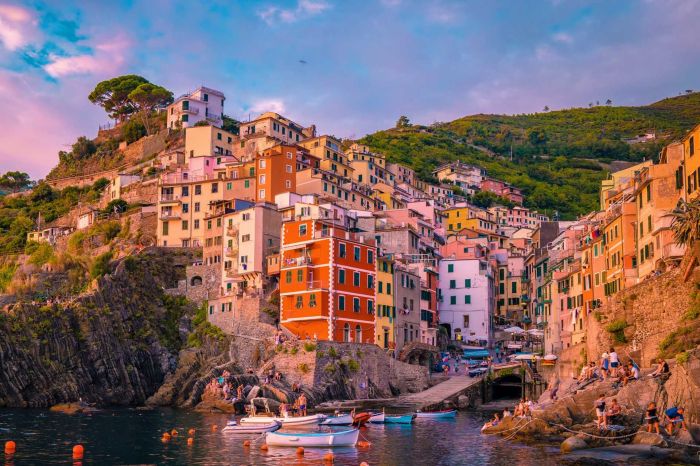
Step back in time and witness the tragic yet captivating story of Pompeii, an ancient Roman city frozen in time by the catastrophic eruption of Mount Vesuvius in 79 AD. This once-thriving city was buried under a thick layer of ash and pumice, preserving its structures and artifacts for centuries.
Pompeii offers a unique glimpse into the lives of ordinary Romans, providing invaluable insights into their daily routines, social structures, and artistic expressions.
The Eruption and its Aftermath
The eruption of Mount Vesuvius, a towering volcano near Pompeii, was a devastating event that changed the course of history. The eruption lasted for two days, unleashing a torrent of hot ash, pumice, and volcanic gases that engulfed the city.
The eruption buried Pompeii under a thick layer of debris, effectively preserving the city in a state of suspended animation. The eruption also led to the deaths of thousands of Pompeiians, their bodies preserved in the hardened ash.
The Excavations and Discoveries
The ruins of Pompeii were rediscovered in the 18th century, and excavations have been ongoing ever since. The meticulous excavation process has revealed a remarkably well-preserved city, offering a unique window into the past. The excavated ruins provide a wealth of information about Roman life, including their architecture, art, and daily routines.
Daily Life in Pompeii
Pompeii was a bustling city with a vibrant economy and a diverse population. The ruins reveal a range of residential and commercial buildings, from humble homes to grand villas, shops, workshops, and public spaces. The streets were paved with cobblestones and lined with shops, taverns, and bakeries.
Pompeiians enjoyed a range of amenities, including a public bathhouse, a theater, and a forum.
The Significance of Pompeii
Pompeii is an archaeological site of immense significance, offering unparalleled insights into the daily lives of Romans. The city’s preservation provides a unique opportunity to study Roman culture, architecture, and art in unprecedented detail. The ruins of Pompeii have helped scholars understand Roman society, economy, and urban planning, providing a valuable resource for historians and archaeologists.
Lake Como: A Picturesque Retreat
Nestled in the heart of Lombardy, Italy, Lake Como is a breathtaking destination that captivates visitors with its stunning natural beauty and rich history. Its mesmerizing waters, framed by majestic mountains, create a picturesque landscape that has inspired artists, poets, and travelers for centuries.
The allure of Lake Como lies in its harmonious blend of natural wonders, charming villages, and luxurious villas, offering an unforgettable experience for every traveler.
The Charming Villages of Lake Como
Lake Como is renowned for its charming villages, each with its unique character and allure.
- Bellagio, often referred to as the “Pearl of Lake Como,” is a picturesque village located at the tip of the lake’s southern branch. Known for its vibrant atmosphere, elegant shops, and breathtaking views of the surrounding mountains, Bellagio is a popular destination for romantic getaways and leisurely strolls.
- Varenna, situated on the western shore of the lake, boasts a more relaxed ambiance. Its charming cobblestone streets, colorful houses, and picturesque harbor make it a perfect spot for enjoying a tranquil getaway. The iconic Villa Monastero, with its lush gardens and breathtaking views, is a must-visit in Varenna.
Italy is a must-see for any traveler, but if you’re looking for something a little different, you should check out Sardinia. It’s an island off the coast of Italy with stunning beaches, ancient ruins, and delicious food. If you’re looking for a place to relax and soak up the sun, check out the Top 10 Places To Visit In Sardinia.
Once you’ve had your fill of Sardinian sunshine, you can head back to the mainland and continue your Italian adventure.
- Menaggio, located on the western shore of the lake, is a lively town known for its bustling harbor and its stunning views of the surrounding mountains. It offers a wide range of amenities, including shops, restaurants, and hotels, making it a convenient base for exploring the region.
The Scenery and Activities of Lake Como
Lake Como’s beauty is undeniable, with its sparkling waters reflecting the surrounding mountains, creating a breathtaking panorama. The lake’s waters are a popular spot for water sports enthusiasts, offering opportunities for swimming, boating, and fishing. The surrounding mountains provide excellent hiking trails, offering stunning views of the lake and its villages.
- For those seeking relaxation, Lake Como offers numerous opportunities to unwind and soak in the scenery. The lake’s shores are lined with charming cafes, restaurants, and gardens, providing perfect spots for enjoying a leisurely lunch or a romantic dinner.
- Lake Como’s picturesque landscape is a popular setting for photography and art, attracting artists and photographers from around the world. The lake’s beauty has inspired numerous works of art, capturing its timeless charm and enchanting atmosphere.
The History and Legacy of Lake Como
Lake Como has a rich history dating back to Roman times, when it was a popular destination for wealthy Romans. Over the centuries, the lake has been a haven for royalty and celebrities, attracting figures like George Clooney, who owns a villa on the lake’s shores.
The lake’s history is evident in its numerous historical villas, which stand as testaments to the region’s rich past. These grand villas, often surrounded by lush gardens and breathtaking views, offer a glimpse into the lives of the region’s elite.
Sardinia
Sardinia, the second-largest island in the Mediterranean Sea, is a captivating destination that blends stunning natural beauty, rich history, and vibrant culture. From pristine beaches and rugged mountains to ancient ruins and charming villages, Sardinia offers a unique and unforgettable travel experience.
Diverse Landscapes
Sardinia boasts a diverse landscape that caters to a variety of interests. Its coastline is dotted with picturesque beaches, ranging from golden sands to rocky coves. The island’s interior is characterized by rugged mountains, lush forests, and rolling hills, offering opportunities for hiking, cycling, and exploring hidden gems.
Rich History and Culture
Sardinia has a rich and fascinating history dating back to ancient times. The island was once home to the Nuragic civilization, known for its unique stone structures, the Nuraghe, which are still visible today. Throughout the centuries, Sardinia has been influenced by various cultures, including Phoenician, Roman, and Spanish, leaving behind a legacy of archaeological sites, ancient ruins, and traditional customs.
Crystal-Clear Waters and Vibrant Nightlife
Sardinia is renowned for its crystal-clear waters, perfect for swimming, snorkeling, and diving. The island’s coastline offers a wide variety of marine life, making it a paradise for water sports enthusiasts. Beyond its natural beauty, Sardinia also boasts a vibrant nightlife, particularly in its coastal towns, with lively bars, restaurants, and clubs that cater to diverse tastes.
Delicious Cuisine
Sardinian cuisine is a testament to the island’s rich agricultural heritage. It features fresh seafood, locally grown fruits and vegetables, and traditional dishes that have been passed down through generations. The island’s culinary delights include the famous “culurgiones,” a type of pasta filled with ricotta cheese and potatoes, and “seadas,” a sweet pastry filled with ricotta cheese and citrus zest.
Relaxation and Adventure
Sardinia offers a perfect balance of relaxation and adventure. Whether you seek to unwind on pristine beaches, explore ancient ruins, or embark on hiking expeditions through rugged mountains, the island caters to diverse interests. Its unique charm lies in its ability to provide both tranquility and excitement, making it an ideal destination for a memorable vacation.
Epilogue
So, whether you’re seeking a whirlwind adventure through the ancient wonders of Rome, a romantic escape to the canals of Venice, or a tranquil retreat to the shores of Lake Como, Italy promises an unforgettable experience. From the bustling cities to the charming countryside, this country will leave a lasting impression on your heart and soul.
Essential Questionnaire
What is the best time to visit Italy?
The best time to visit Italy depends on your preferences. Spring (April-May) and autumn (September-October) offer pleasant weather and fewer crowds. Summer (June-August) is the peak season with hot temperatures and high tourist numbers.
How much does it cost to travel to Italy?
The cost of traveling to Italy varies depending on your travel style, accommodation choices, and activities. Expect to spend around $100-$200 per day for budget travel, $200-$300 for mid-range travel, and $300+ for luxury travel.
What are some must-try Italian foods?
Italy is famous for its delicious cuisine! Some must-try dishes include pizza, pasta, gelato, tiramisu, and espresso. Don’t forget to sample local specialties like Florentine steak, Bolognese sauce, and Arancini.
Do I need a visa to travel to Italy?
Visa requirements vary depending on your nationality. Most citizens of developed countries can enter Italy without a visa for up to 90 days as tourists. Check the latest visa regulations for your country before traveling.
